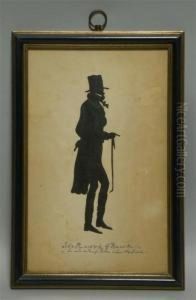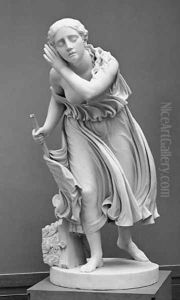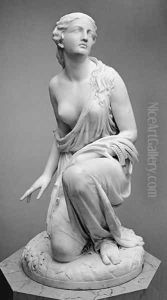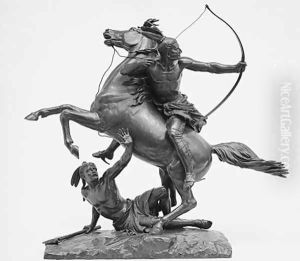Randolph Rogers Paintings
Randolph Rogers was an American neoclassical sculptor born on July 6, 1825, in Waterloo, New York. Though he began his career as a merchant, his interest in sculpture was piqued during a business trip to Italy, where he was inspired by the wealth of art and history. This inspiration led him to pursue a career in sculpture, and he eventually settled in Rome in 1851, which was a center for American expatriate artists at the time.
Rogers was largely self-taught, but he benefitted from the vibrant artistic community in Rome and the availability of skilled Italian carvers and craftsmen. His style was firmly rooted in the neoclassical tradition, characterized by idealized beauty, clarity of form, and themes drawn from ancient literature and history. He became well-known for his marble sculptures, which often depicted mythological subjects and were marked by their fine detail and sense of elegance.
One of Rogers' most famous works is the bronze doors of the Capitol in Washington, D.C., called the 'Columbus Doors,' which depict scenes from the life of Christopher Columbus. Completed in 1863, these doors are considered a significant work in American sculpture. Another notable work is the statue of President John Adams in Statuary Hall in the Capitol.
Throughout his career, Rogers received numerous commissions for public monuments, portrait busts, and ideal figures. His works were exhibited and praised both in Europe and the United States. Despite his success, Rogers faced financial difficulties later in life due, in part, to the economic disruptions of the American Civil War.
Randolph Rogers passed away on January 15, 1892, in Rome, where he had spent the majority of his artistic career. His legacy lives on through his sculptures, many of which are held in museums and public collections across the United States. Rogers' contribution to American art is remembered for its embodiment of the neoclassical aesthetic and its influence on the work of subsequent American sculptors.



